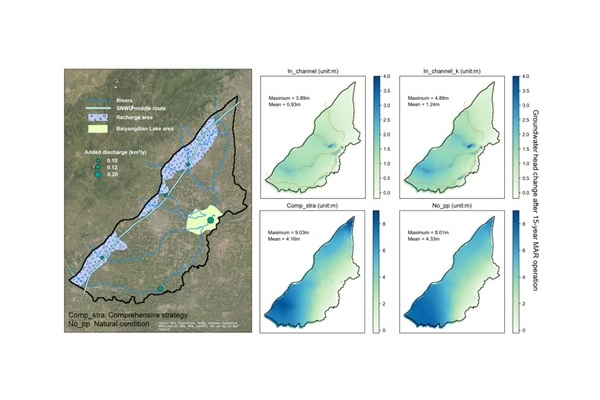INTEGRATED SURFACE WATER AND GROUNDWATER MODELING OF THE BAODING PLAIN IN NORTHERN CHINA: TOWARDS GROUNDWATER SUSTAINABILITY THROUGH MANAGED AQUIFER RECHARGE
The North China Plain (NCP, 140,000 km2) is one of the global groundwater depletion hotspots. The Baoding Plain (BDP, 10,516 km2), located in the northwest, is one of the severely depleted regions within the NCP. Managed aquifer recharge (MAR) is a promising water management strategy to address groundwater over-exploitation. An opportunity to resolve the groundwater imbalance exists in the BDP, because the aqueduct of the South to North Water Diversion (SNWD) project runs in the piedmont area of the BDP, with alluvial fans suitable for recharge augmentation and an annual allocation of SNWD water of 0.70 km3. Therefore, this study investigates the potential of large-scale MAR, a key component of conjunctive surface water-groundwater management toolbox, to shift the water resources management paradigm from groundwater over-exploitation towards groundwater sustainability. In this study, an integrated surface water - groundwater model for the BDP was developed using the MIKE SHE code. To demonstrate the significance of the subsurface geological structure, a homogeneous and a heterogeneous geological model based on 736 borehole lithological records were compared. Simulations found that the mean annual groundwater storage deficit of the BDP was 1.26 ± 0.33 km3/yr (or 0.45 ± 0.1 m/yr) between 2000 and 2015 or prior to the arrival of the SNWD water. However, only about a quarter of the total in-channel released water of 0.91 km3/yr, recharged the aquifer, increasing the groundwater storage by 0.18 km3/yr (0.05 m/yr). The scenario of a combination of irrigation reduction of 20%, in-channel recharge enhanced by MAR infrastructures and recharging the reclaimed water through farmlands (Agriculture-MAR), the groundwater deficit of the BDP will significantly reduce to 16%. This study concludes that MAR can alleviate groundwater overexploitation in the BDP to a large extent, but it requires bold and sustained efforts with water demand management through significant reduction in irrigation water withdrawal and long distance transfer infrastructure of urban reclaimed water for rural irrigation supply, and water resource allocation to ensure a large portion of SNWD to augment recharge. All of which requires investment, thus a follow-up analysis of economic feasibility to achieve groundwater sustainability is necessary.
Additional information: Ms. Wensi GUO, guowensi@connect.hku.hk










